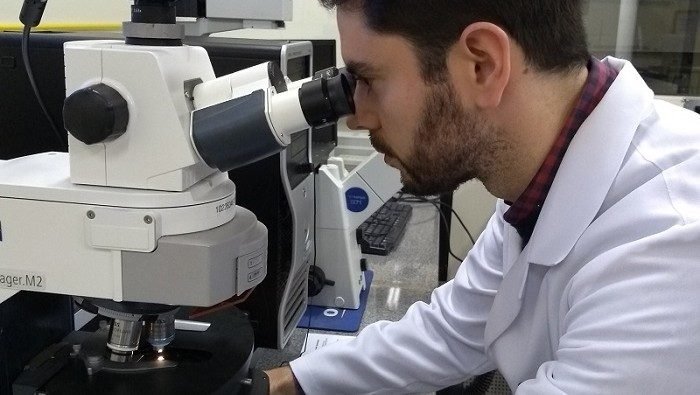Spider molecule can bring health benefits
After four years of study, Rodrigo Braccini's doctoral thesis was published in the international journal Molecular Neurobiology . In a partnership between the Toxicology and Pharmacology Research Center (INTOX; PUCRS), the Brain Institute of RS, and the Teaching and Research Institute of Santa Casa de Belo Horizonte, the thesis seeks an alternative for the treatment of multiple sclerosis through a molecule derived from the spider spider.
In 2015, during the master's degree, Rodrigo Braccini, author of the study, found that the Phα1β molecule, derived from the spider Phoneutria nigriventer , popularly known as waddle, demonstrated anti-inflammatory activity in mice with cystitis hemorrhagic, besides producing analgesia (an already known effect of the molecule). With that, in the doctorate, the idea was to test the CTK 01512-2, a recombinant version of Phα1β, that is, the peptide being produced from a host (bacterium), in the animal model of multiple sclerosis, also technically known as encephalomyelitis experimental autoimmune. In addition, the effects produced by CTK 01512-2 were compared with those of ziconotide, a medicine used in the clinic for chronic pain, and fingolimod, a medicine used to treat multiple sclerosis.
Multiple sclerosis is a chronic and demyelinating neuroinflammatory disease that affects the central nervous system (brain and spinal cord). It is a disease that usually affects young adults aged 20 to 40 years and leads to physical and mental disability almost irreversible. To date, there is no cure.
Thus, in the study, behavioral parameters (pain, memory, motor coordination, neurological signs and symptoms), histological (inflammatory infiltrate, demyelination), biochemical (pro-inflammatory and anti-inflammatory markers), cellular (activation) parameters were evaluated astrocyte and microglia) and imaging (microPET; glucose metabolism) in mice with multiple sclerosis.
“The results, in summary, indicate that CTK 01512-2 significantly improved the neuroinflammatory responses evoked in the animal model of multiple sclerosis, with superior efficacy when compared to ziconotide; and superior therapeutic effects when compared to fingolimod, in parameters such as: memory, inflammatory infiltrate, demyelination, leptin and IL-10 secretion (anti-inflammatory and neuroprotective marker) ”, stated Rodrigo Braccini, author of the study.
Therefore, the author suggests that, in the near future, CTK 01512-2 may be used in combination with current therapies for multiple sclerosis as an axonal protection strategy (of a part of the neuron - axon) to, with this, avoid damage to the central nervous system. The next step is to assess the chronic toxicity of the molecule, that is, whether it has adverse effects in the long run. Unpublished results have shown that there was no acute toxicity, that is, in the short term.
Graduated in Pharmacy from PUCRS, Rodrigo has a master's and doctorate in the Postgraduate Program in Medicine and Health Sciences, in the area of concentration of Biochemical and Molecular Pharmacology. The study co-authors are: Samuel Greggio, Gianina Teribele Venturin, Jaderson Costa da Costa, Marcus Vinicius Gomez and Maria Martha Campos.


